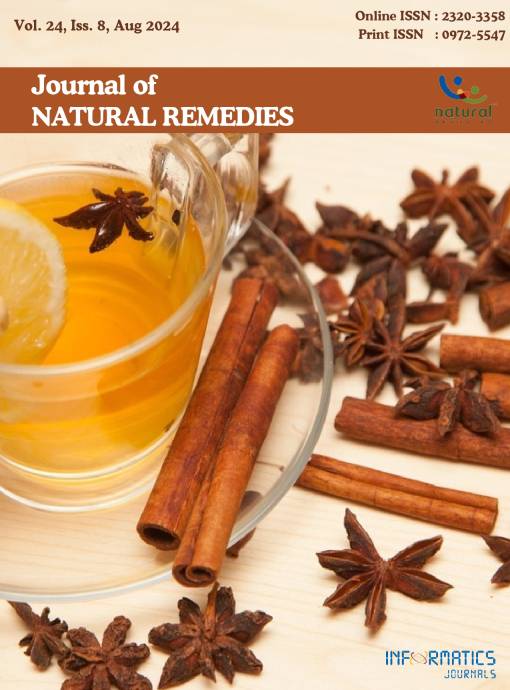Management of Osteonecrosis of the Femoral Head Using Ayurvedic Treatment: A Case Report
DOI:
https://doi.org/10.18311/jnr/2024/34551Keywords:
Asthi, Asthimajjagat Vata, Avascular necrosis, Majja, OsteonecrosisAbstract
Background: Osteonecrosis, popularly also called as Avascular necrosis is defined as insufficiency in arterial feeding of the head of the femur which creates a complex of symptoms, characterized by pain, impaired function, and structural breakdown, resulting in considerable deterioration, even necrosis of bone. Osteonecrosis can occur by a number of reasons. They can be traumatic (after femoral neck fractures or hip joint dislocations), idiopathic, corticosteroid-induced, alcohol-induced, and infection-related. In Ayurveda classics, this disease can be precisely correlated with Asthimajjagat Vata, which basically occurs due to the deficiency of Asthi and Majja dhatus. Case Report: This is a case report of a 52-years-old female patient who visited to the OPD, with pain in lumbar region that radiated to both lower limbs, pain in both hip joints and she couldn't walk a short distance and sit without the support of hand. She had a history of fall 2 years back after which the complaints started. Results and Observations: The patient got significant relief in his range of movement, abduction, adduction, flexion, extension, internal rotation and external rotation are improved after the treatment. Discussion: Combination of ksheera and tikta rasa dravya can produce snigdha and soshana property at the same time. All this contributes to the samprapti vighatana of this condition. Conclusion: The main aim of this study is to encourage the classical Ayurvedic remedies in the management of Osteonecrosis. This case study demonstrates the management of Osteonecrosis through classical Ayurvedic treatment.
Downloads
Metrics
Downloads
Published
How to Cite
Issue
Section
License
Copyright (c) 2024 Pankaj Yadav, Vaishali Kuchewar, Mayuri Amol Deshpande, Parveen Nandal (Author)

This work is licensed under a Creative Commons Attribution 4.0 International License.
Accepted 2024-07-22
Published 2024-08-31
References
Myi K. Osteonecrosis. Health Topics. National Institute of Arthritis and Musculoskeletal and Skin Diseases. 2001. Version 2.0 - 3/06.
Kenzora JE. Symposium on idiopathic osteonecrosis: Foreword. Orthop Clin North Am. 1985; 16:593-594.
Singla R, Sharma P. Role of Panchatikta Ksheer Basti in the management of avascular necrosis: A case study. International Journal of Research in Medical Sciences and Technology. 2021; 12:115-121. https://doi.org/10.37648/ ijrmst.v11i02.010
Shastri K, Chaturvedi G. Commentary vidyotini, charaka samhita, chikitsa sthana. Chaukhamba Bharti Academy. 2011. p. 822.
Acharya GS. Panchakarma illustrated. Chaukhamba Sanskrit Pratisthan. 2015. p. 220.
Chaudhari V, Shukla R, Suthar B. A single case study on the role of Tikta Ksheer Basti in the management of avascular necrosis of head of femur. World J Pharm Med Res. 2020; 6(6):231-232.
Kumar V, Sonu D. A case study on the effect of Shashtik Shali Pinda Sweda and Mahamasha Taila Nasya Karma in the management of Ekanga Vata with Mamsakshaya w.s.r. demyelination of nerve. World J Pharm Pharm Sci. 2021; 6(10):1291-1296.
Joshi A, Mehta CS, Dave AR, Shukla VD. Clinical effect of Nirgundi Patra panda sweda and Ashwagandhadi Guggulu Yoga in the management of Sandhigata Vata (Osteoarthritis). Ayu. 2011; 32(2):207-212. https://doi.org/10.4103/0974-8520.92588
Lochan K. Bhaisajya Ratnavali. Chaukhamba Sanskrit Sansthana. 2006; 257.
Pushpa VH, Jayanthi MK, Patil SM, Ramu R. Pharmacological profile of Shiva Gutika: An uncharted and versatile polyherbal drug. All Life. 2021; 14(1):215-219. https://doi.org/10.1080/26895293.2021.1903570

 Pankaj Yadav
Pankaj Yadav









 0.35
0.35 24
24 0.161
0.161